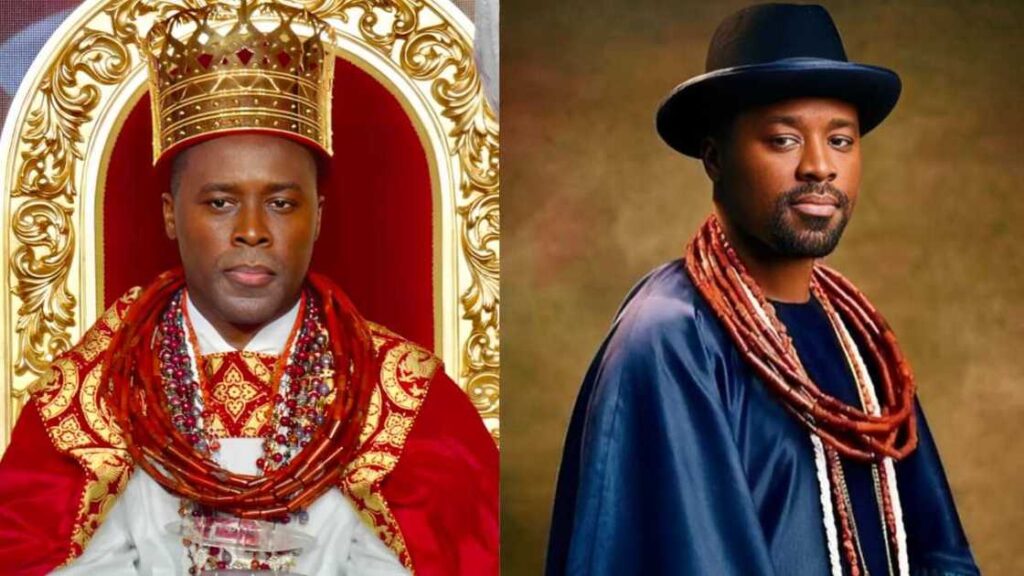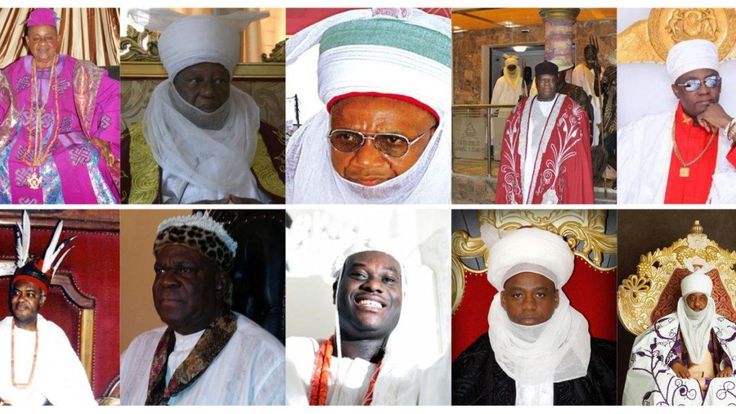In Nigeria, royal dressing is not just about elegance—it is a tapestry of cultural heritage, political authority, spiritual symbolism, and evolving identity.
From the resplendent robes of ancient Obas to the global runway-inspired regalia of today’s monarchs, royal fashion in Nigeria tells the story of a people and their proud traditions.
As times change, so do the expressions of power and status, yet traditional Nigerian royalty continues to inspire awe, admiration, and reverence.
This article takes you on an immersive journey through the centuries, exploring how royal dressing in Nigeria has evolved from ancient expressions of divine authority to contemporary blends of heritage and haute couture.
The Origins: When Clothes Spoke the Language of Kings
A Sacred Authority
In pre-colonial Nigeria, kingship was considered divine. Monarchs were believed to be chosen by the gods and often acted as spiritual intermediaries between the heavens and their people. Naturally, their appearance had to reflect this sacred status.
Royal dressing, therefore, was deeply symbolic. Every bead, embroidery, or fabric worn by a king had a purpose. It was less about fashion and more about function—spiritual function.
Across different kingdoms and ethnic groups, unique styles emerged, each communicating the wealth, wisdom, and warrior lineage of the ruler.
Royal Styles Across the Tribes
1. The Yoruba Obas: Beaded Crowns and Velvet Power
Yoruba kings, known as Obas, are among the most elaborately dressed monarchs in Nigeria. Their royal ensemble traditionally includes
- Agbádá: A three-piece attire made of heavy, flowing fabric—often richly embroidered and colored in symbols that denote wisdom and leadership.
- Beaded Crowns (Ade): These veiled beaded headdresses often include spiritual motifs and hide the face of the Oba—a mark of sacredness and mystery.
- Ileke (Beads): Long strands of coral beads symbolize royal blood and ancestral linkages.
These regal appearances were not just for show—they reinforced the Oba’s role as a link between the physical and spiritual realms.
2. The Northern Emirs: Turbans and Majesty
In Northern Nigeria, the Emirs traditionally exude power through flowing robes and spiritual modesty. Their attire often includes:
- Babbar Riga: A wide, flowing gown usually worn over a tunic.
- Alkyabba (Cloak): A ceremonial robe, often imported or handwoven, symbolizing wealth and connection to trans-Saharan trade.
- Turban: Carefully wrapped, sometimes extending feet above the head, reflecting status, spirituality, and Islamic influence.
The Northern style is minimalist in color yet majestic in size and symbolism. It shows power with quiet authority.
3. The Igbo Eze: Culture in Every Thread
Igbo traditional rulers—known as Ezes—take a more symbolic approach to dressing:
- George Wrappers: Intricately embroidered wrappers often imported from India or handwoven in Nigeria.
- Red Cap (Okpu Ododo): A red, round cap worn only by men of title. This single piece alone separates royalty from commoners.
- Ivory Bangles and Elephant Tusks: Symbols of strength and leadership.
- Walking Staff or Ofo Stick: Signifying ancestral and spiritual authority.
While simple in some respects, the Igbo royal dress reflects deep cultural philosophy and a sense of reverence for ancestry.
The Colonial Disruption: Western Influences and Changing Identity
With the advent of colonialism came a wave of cultural upheaval. Western governance systems, Christianity, and the introduction of new economic systems altered the perception of royalty.
Some monarchs were forced to dress in colonial uniforms—military-inspired jackets, trousers, and hats—during state functions. Others were encouraged to Westernize their dressing to appear more “civilized” before British officials.
However, many monarchs pushed back. Instead of abandoning tradition, they fused Western styles with indigenous patterns, creating a new kind of royal fashion that retained cultural authority while adapting to new political realities.
Post-Independence Nigeria: A Revival of Royal Pride
After Nigeria’s independence in 1960, there was a cultural renaissance. The newly freed nation embraced its traditions, and royalty once again became a symbol of heritage.
During national festivals and state events, kings and queens began appearing in traditional regalia with renewed pride. The agbádá became grander, the beads more elaborate, and the fabrics bolder.
Photography also became a tool of cultural preservation. Prominent Nigerian photographers like George Osodi began documenting the regal appearances of monarchs, capturing the splendor and elevating the status of traditional rulers in modern society.
21st Century Royalty: Fashion Meets Influence
Red Carpets, Runways, and Instagram
Modern-day Nigerian royalty is now a blend of old-world opulence and new-world flair. Many monarchs are fashion icons in their own right. Social media has allowed kings and queens to showcase their wardrobe choices to millions, influencing both traditional and contemporary fashion trends.
For instance:
- The Ooni of Ife is known for his all-white ensembles and beaded accessories that blend purity, tradition, and modern styling.
- Queen Naomi Silekunola (former Olori of Ife) became a fashion trendsetter during her reign, often mixing traditional Yoruba dress with chic, modest fashion that resonated with young women.
- The Emir of Kano has stunned in elaborately layered fabrics in state ceremonies, attracting attention even from global fashion circles.
The Role of Designers and Tailors
Nigerian fashion designers are now active participants in the evolution of royal dressing. From Mai Atafo to Deola Sagoe, designers are merging cultural storytelling with tailored elegance.
These designers often create bespoke pieces for royal families, ensuring that their garments are both historically accurate and fashion-forward. Royal dressing has thus entered an era of haute couture.
Royal Accessories: The Constant Symbols of Power

Even as styles evolve, certain elements remain timeless in Nigerian royalty:
- Beads: Often coral or agate, signifying royalty, wealth, and divine selection.
- Crowns and Caps: From the Yoruba Ade to the Igbo red cap, these headpieces are non-negotiable royal symbols.
- Staffs and Fans: Symbolizing leadership, respect, and the monarch’s role as a shepherd to his people.
These accessories often hold more power than the clothes themselves—they are ancestral, sacred, and irreplaceable.
Women in Royal Fashion
Female royalty in Nigeria—princesses, queens, and queen mothers—have also contributed immensely to the style evolution.
From the colorful iro and buba worn by Yoruba queens to the majestic gele (headwrap) styles of the South-South and the elegant blouses and skirts of Igbo royalty, female fashion has elevated the aesthetic of the Nigerian royal court.
In recent years, Nigerian royal women have graced magazines and fashion editorials, reflecting strength, elegance, and cultural pride.
Challenges and Controversies
Not all that glitters is regal.
There have been debates over authenticity and the over-commercialization of royal attire. Critics argue that some monarchs now dress more for vanity and viral attention than for spiritual and cultural duty.
There is also the risk of younger generations losing the sacred meanings behind the beads and crowns, seeing them merely as costumes instead of culture.
Nevertheless, many monarchs and cultural custodians are taking steps to educate the public and preserve the sanctity of royal dressing through documentaries, festivals, and exhibitions.
A Look Into the Future
What does the future hold for royal fashion in Nigeria?
Experts believe we’ll continue to see a fusion of heritage and high fashion. Digital fashion, NFTs, and virtual reality exhibitions may even become part of how royal dressing is showcased to the world.
However, the heart of royal fashion will always remain the same—a visible link to ancestry, dignity, and divine right.
Elegance Woven with Identity
From beaded veils and velvet agbádás to Instagram posts and runway shows, the evolution of royalty dressing in Nigeria is a story of resilience and reinvention.
It shows that fashion, especially royal fashion, is more than adornment—it’s a language of legacy. Each generation of monarchs has added their thread to Nigeria’s cultural fabric, ensuring that the robes of power remain as relevant tomorrow as they were centuries ago.
In Nigeria, royal fashion is not just worn—it is inherited, honored, and lived.

